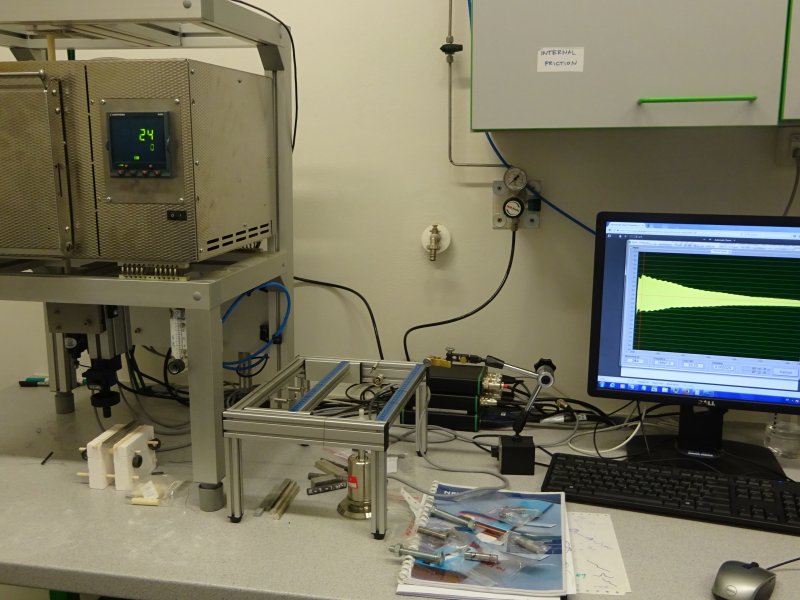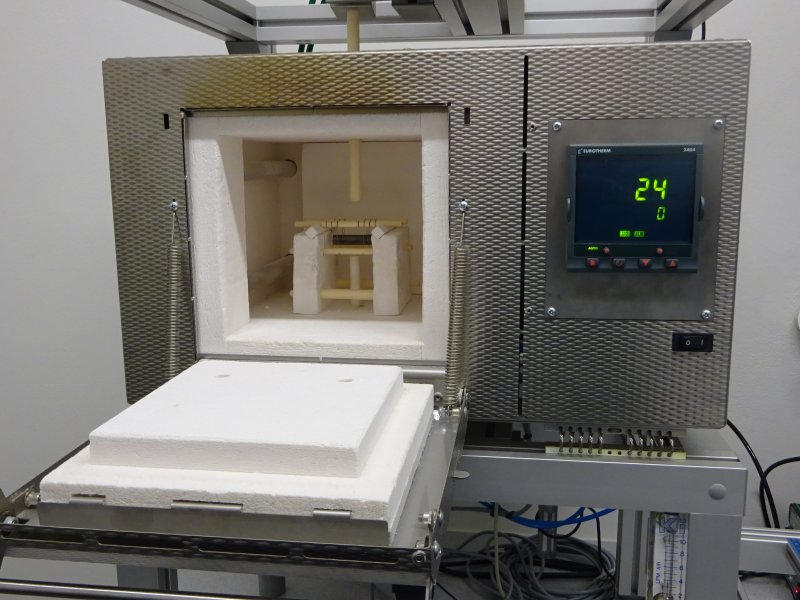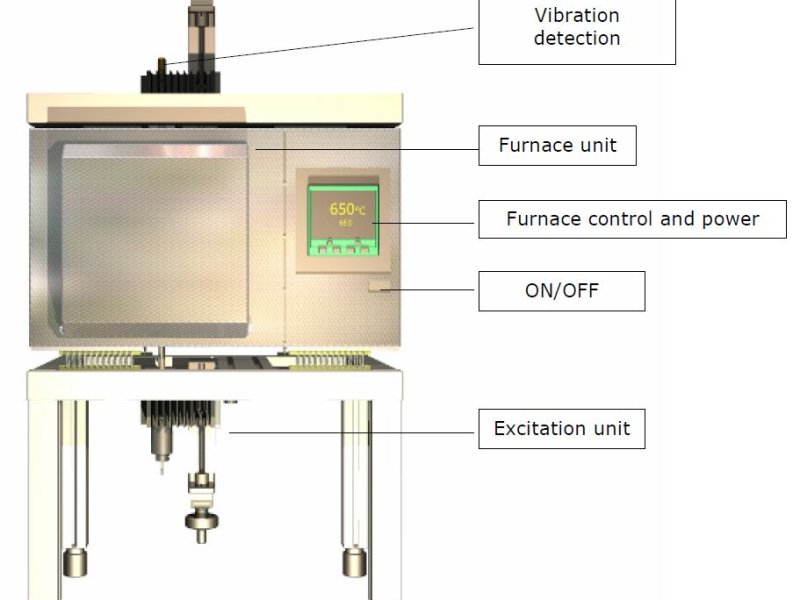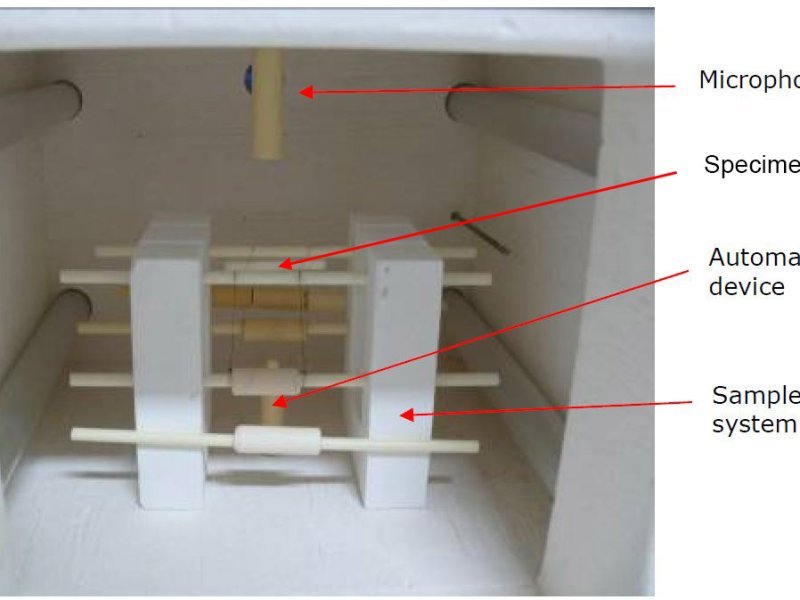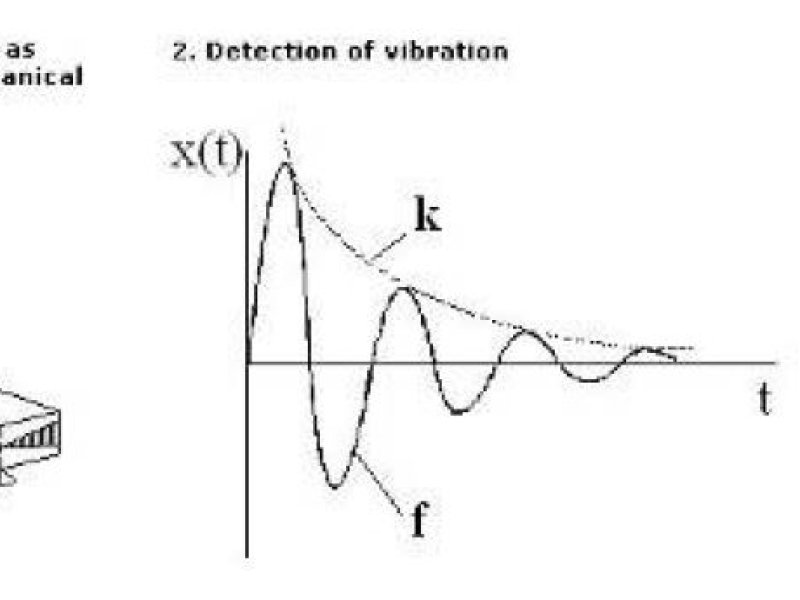Resonance and Internal friction
The phenomenon of internal friction is defined as the dissipation of mechanical energy (connected with deviations from the Hooke’s law) inside a substance exposed to a time-dependent load within the “elastic” deformation. The Impulse Excitation technique used at our department is based on the analysis of the vibration of a test sample or component after it was 'impulse excited' (=gently tapped). The High-Temperature unit (IMCE n.v.) is a furnace designed to perform measurements up to 650°C. It is equipped with a non-destructive Resonant Frequency and Damping Analyser (RFDA). Specimen supports, impulse locations and signal pickup points are selected to induce and measure specific modes of vibration. The vibration has a frequency spectrum according to its resonant frequencies that depend on the elastic properties of the material, its geometry, and its density.
Absolute information:
For suitable objects such as rectangular bars, cylindrical rods and discs and for homogeneous, elastic, isotropic materials, it is possible to calculate Young’s Modulus, Shear Modulus and Poisson’s Ratio. These calculations and measurement set-ups are based on the ASTM E 1876 standard.
Relative information:
The exact (micro)structural origin of internal friction varies from one class of materials to another. The resonance frequency and corresponding damping values can be used:
- to correlate them with other properties of the material, such as elastic properties, viscosity, density, porosity, microstructure,
- to detect phase transformations during sintering,
- to measure the effect of different firing cycles or aging,
- for crack detection, etc.
Contact: RNDr. Ing. Michal Knapek, Ph.D.


